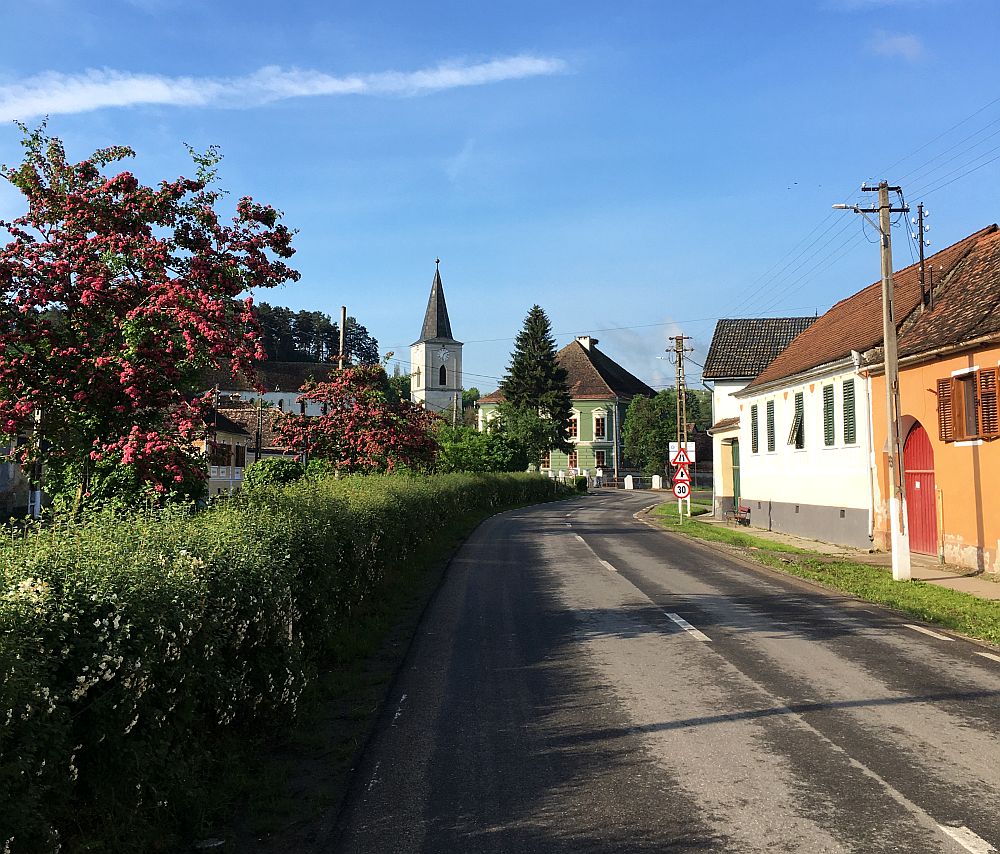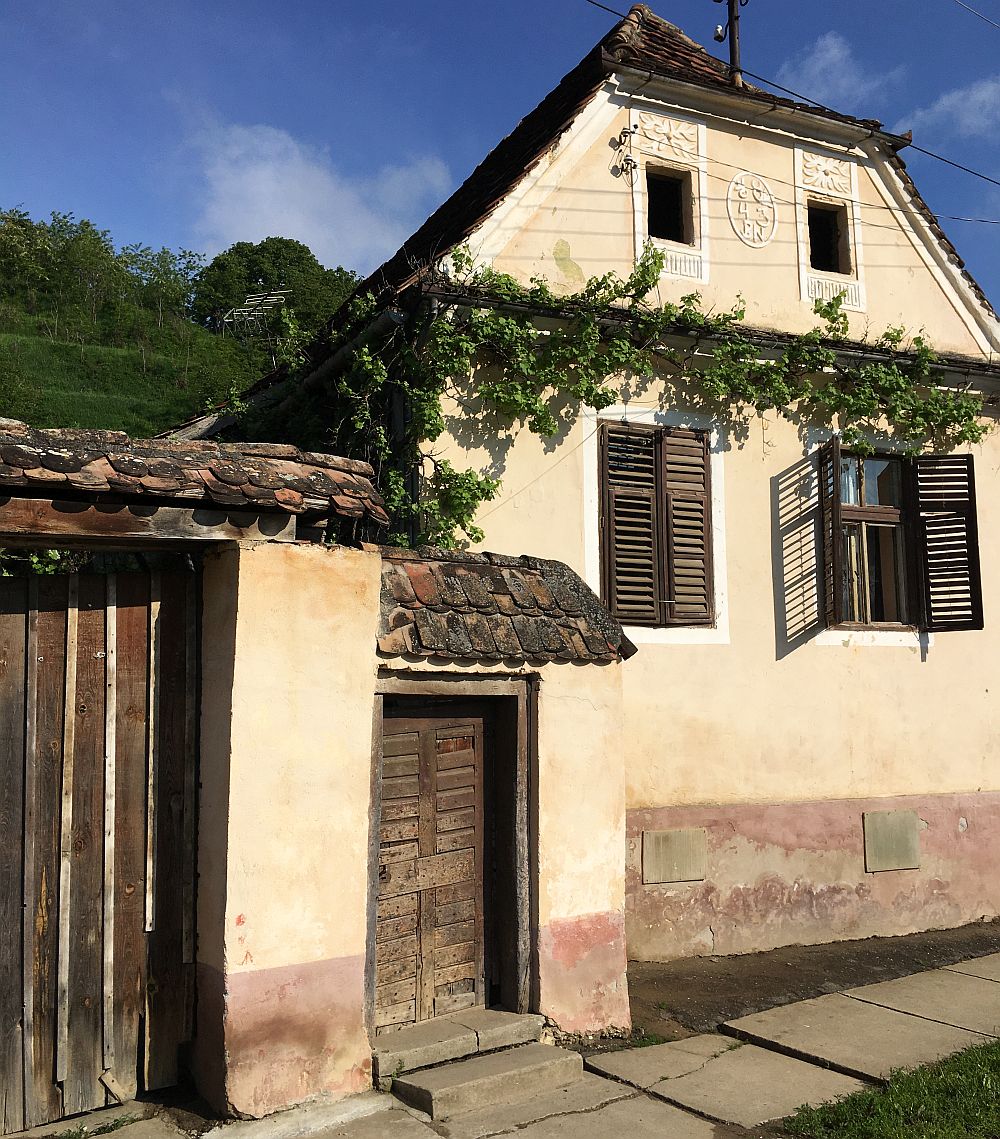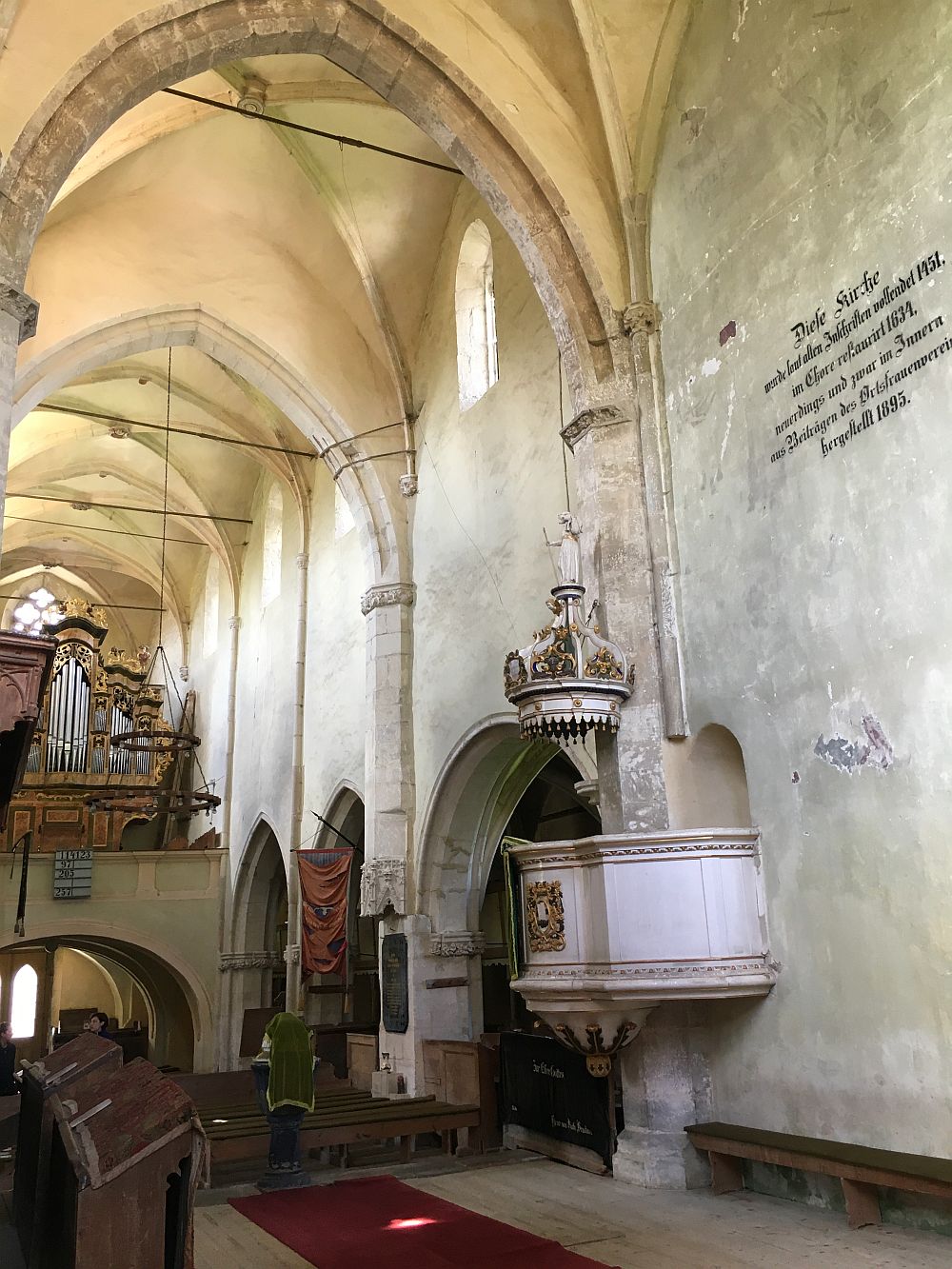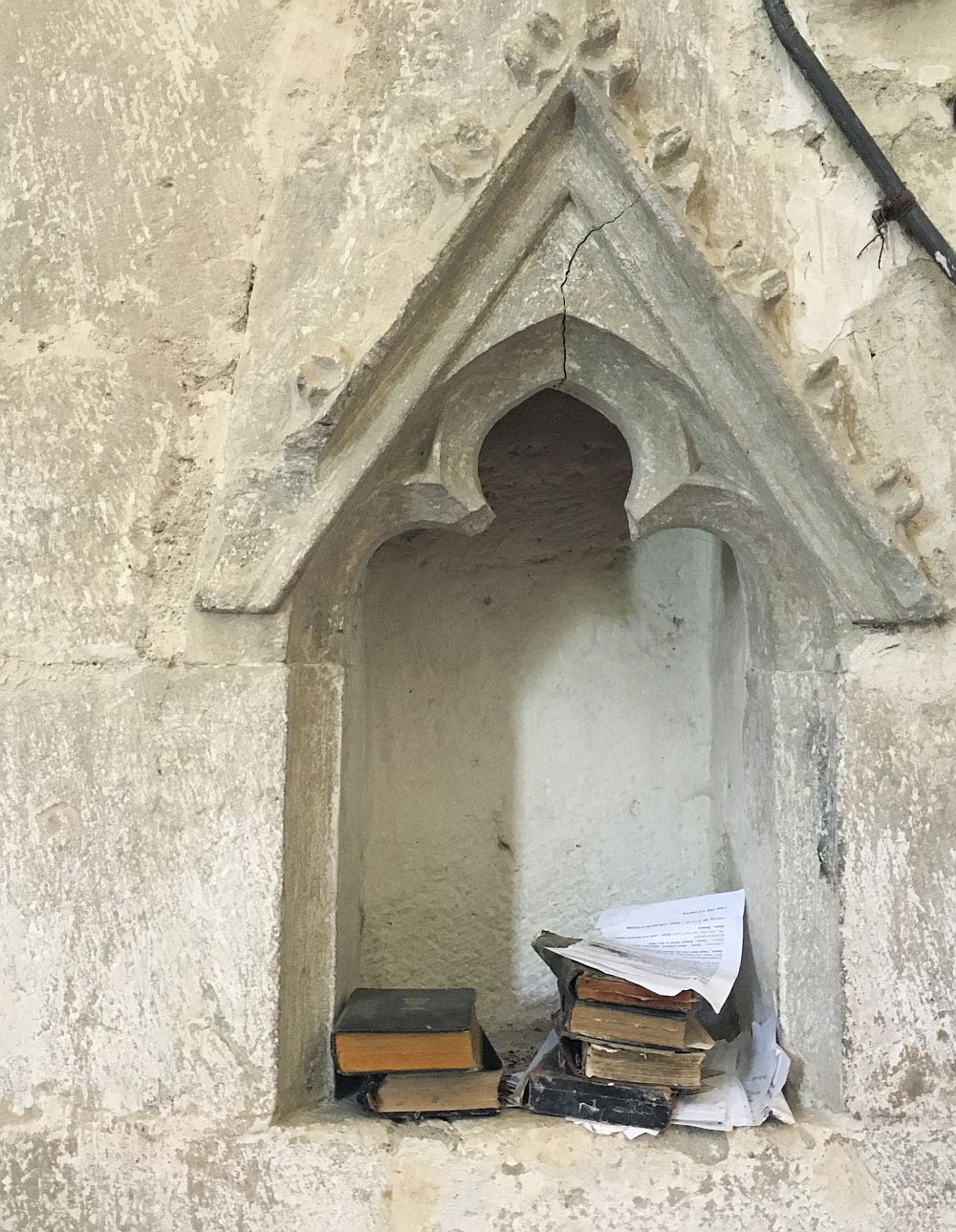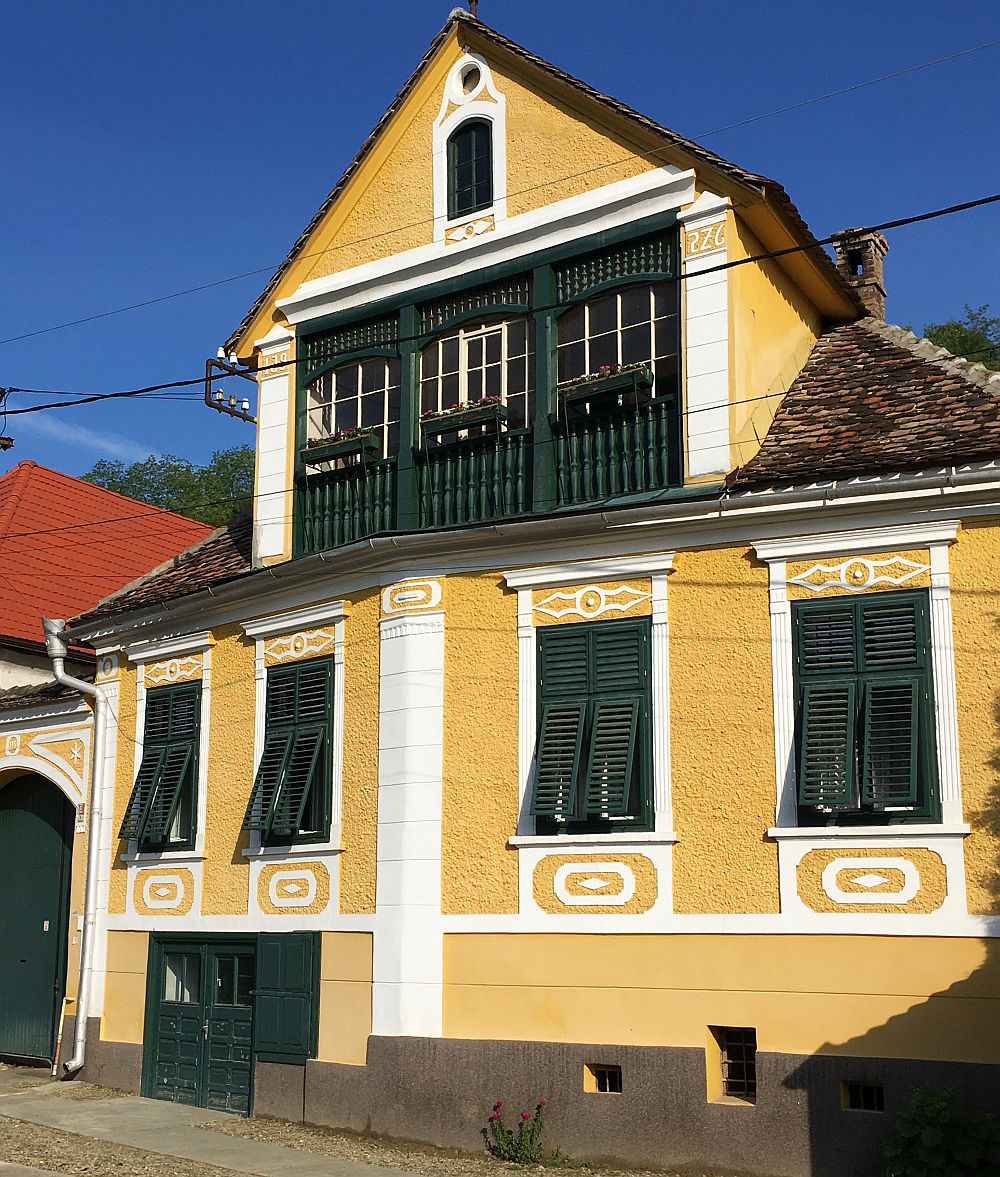Richişul face parte din acelasi paradox in care se regasesc toate satele din România, fiind deopotriva Rai si Iad, aflat intre fascinatia pentru simplitatea si pitorescul vechiului burg transilvan si fatalism, saracie si dorinta de a evada a localnicilor pentru a-si asigura un trai mai bun.
Atestat documentar pentru prima data la 1.283, satul Richiş din nordul judetului Sibiu era cunoscut ca Richisdorf, si a devenit in timp una dintre cele mai prospere localitati din zona Mediasului, dar apoi, pe la inceputul anilor ’90, burgul nemtesc din Podisul Transilvaniei ramane aproape pustiu, dupa ce sasii au luat drumul strainatatii.
Intre timp, insa, Richişul a devenit astazi un sat multinational cu locuitori de origine olandeza, americana, austriaca, germana, englezeasca si elvetiana, caci multi au indragit acest sat, incat a fost adoptat de vreo 20 – 25 de familii din strainatate. Acum, Richisul este un sat international cu locuitori din Olanda, Austria, Elvetia, Germania, Marea Britanie si chiar Statele Unite. Toti au cumparat case si le-au reconditionat pastrand arhitectura originala; incet-incet, acestia au readus la viata si au dezvoltat localitatea construind pensiuni turistice si un camping.
Toate acestea le-au redat increderea si localnicilor, care-au aflat repede ce pretioase si gustoase sunt zacusca, branza, vinul si tuica locala, pe care au inceput sa le produca dupa retetele traditionale din fiecare familie si acum le vand noilor vecini straini si turistilor, spre deliciul general al locuitorilor si oaspetilor din acest vechi sat medieval. Daca s-ar redeschide si brutaria sateasca, ar fi minunat si ar completa firesc savorile rurale, caci, recunosc, pofta mea pentu paine calda a ramas neindeplinita, dupa ce am cautat in zadar si am intrebat oamenii din sat (si din 3 alte sate imprejur) unde gasesc o paine calda.
Am ajuns la Richis la inceputul lui iunie, pe o ploaie torentiala care ne-a insotit inca de la plecarea din Bucuresti, timp de vreo 5 ore pe tot drumul, insa, s-a oprit ca prin minune cand am intrat in sat. Casele sunt insiruite de-a lungul soselei principale, intr-o parte cu dealul si padurea in curte, iar in cealalta, cu poieni si capite de fân, totul intr-un peisaj romantic de un verde crud, patrunzator si revigorant. In centru, unde se afla scoala si biserica fortificata cisterciana, drumul principal se bifurca in 3 ramuri de lungime medie si cam asta este toata asezarea.
Curiozitatea a fost mai mare decat noroiul de pe jos, asa ca am pornit in explorare, atrasa irezistibil de culorile si arhitectura caselor, fie ele mai bine intretinute si reconditionate, sau in paragina ori parasite. Frumusetea locului este incontestabila, chiar romantica, prin linistea si paleta extraordinara de culori adusa mai ales de rasarit si de apus.
Apropos de noroi, blazonul localitatii este actual, atat ca simbol cat si ca realitate – bâtlanul ce paseste gratios intr-un iaz nesfarsit, sub un cer la apus, aminteste de mlastina de altadata.
Biserica gotica fortificata din sat a fost o mănăstire cisterciană transformată în 1.400 în biserică catolică. În perioada 1.540-1.550 a fost impus la Richis cultul evanghelic. Zidul de fortificaţie a fost adăugat tot prin preajma anului 1.500. În dreptul bisericii se remarcă turnul clopotniţă detaşat de clădirea bisericii şi asta deoarece iniţial, ordinul cistercian nu avea voie să construiască un turn pe biserică.
Este o comoară de netăgăduit ce se lasă treptat descoperită de ochiul iscusit al vizitatorului, iar interiorul abundă în motive zoomorfe, vegetale şi antropomofe inedite. Cea mai captivantă este, de departe, figura omniprezentă a „omului verde” văzut în diverse ipostaze, „drăcuşori” după cum îi numeşte domnul Schaas, curatorul si unul dintre puţinii saşi care au mai rămas în sat. Interesant este şi altarul realizat în 1.775, în stil baroc, cu tema Răstignirii.
Biserica evanghelică Richiş este o apariţie cu totul deosebită în peisajul bisericilor fortificate, poate şi datorită faptului că a adăpostit o perioadă de timp un ordin monahal. Bazilica cu 3 nave şi fără turn ridicată în sec. al XIV-lea a fost apărată de un zid de incintă cu două turnuri de apărare şi drum de strajă. Ceea ce o deosebeşte pe aceasta de alte biserici de sat este ornamentaţia bogată: portalul de vest are cinci retrageri succesive, nervurile bolţilor se sprijină pe colonete şi pilaştri cu capiteluri, cheile de boltă sunt decorate cu măşti, iar mulurile ferestrelor sunt tratate difert. O altă particularitate o reprezintă arcul de triumf dublat, semn că iniţial s-a dorit aici construirea unui turn.
Păsările de baltă apar des pe blazoanele europene, lucru datorat probabil alegoriei pelicanului, acesta fiind preluat în iconografie ca simbol al Mântuitorului, al Jertfitorului. Se spune că pelicanul şi-a sfâşiat pieptul, lăsându-şi sângele fierbinte să ţâşnească printre penele albe pentru a-şi reînvia puii fără suflare. În biserica din Richiş această pasăre mitică îşi găseşte un loc de cinste pe cheia de boltă a corului, fiind doar una dintre preţioasele opere de artă din lăcaş.
In rest, ce-as mai putea spune despre Richis, pe scurt: liniste si splendoare compusa din solemnitatea vestigiilor istorice, natura aproape salbatica ce invadeaza curtile oamenilor si casele pitoresti indiferent de gradul lor de prabusire sau consolidare, un amalgam cu un grad extraordinar de atractie, empatie si frumusete.
English translated version:
Richiş is part of the same paradox in which all the villages in Romania are found, being both Heaven and Hell, between the fascination for simplicity and the picturesque old Transylvanian burg and fatalism, poverty and the desire to escape for the survival of the locals.
Documented for the first time in 1,283, the village of Richiş placed in the north of Sibiu County was known as Richisdorf, and in time became one of the most prosperous localities in the Medias area, but then, in the early 1990s, the German town in the Transylvanian Plateau remains almost deserted, after the Saxons went abroad.
In the meantime, however, Richiş has today become a multinational village with inhabitants of Dutch, American, Austrian, German, English and Swiss origin, as many have loved this village, so much so that it has been adopted by about 20-25 families from abroad. Richiş is now an international village with residents of the Netherlands, Austria, Switzerland, Germany, the United Kingdom and even the United States. They all bought houses and refurbished them, keeping the original architecture; slowly, they brought back to life and developed the town by building tourist boarding houses and also a campsite.
All this has restored the confidence of the locals, who quickly found out how precious and tasty zacusca, cheese, wine and local brandy are, which they started to produce according to the traditional recipes of each family and now sell them to new foreign neighbors and tourists, to the general delight of the inhabitants and guests of this old medieval village. If the village bakery were reopened, it would be wonderful and naturally complement the rural flavors, because, I admit, my appetite for hot bread remained unfulfilled, after searching in vain and asking the people in the village (and 3 other villages around) where I find a warm bread.
We arrived in Richis at the beginning of June, on a torrential rain that accompanied us since we left Bucharest, for about 5 hours all the way, but it stopped miraculously when we entered the village. The houses are lined along the main road, on one side with the hill and the forest in the yard, and on the other, with meadows and haystacks, all in a romantic landscape of a raw, penetrating and invigorating green. In the center, where the school and the Cistercian fortified church are located, the main road forks into 3 branches of medium length and that’s about the whole settlement.
My curiosity was greater than the mud on the ground, so I set out to explore, irresistibly drawn to the colors and architecture of the houses, whether they were better maintained and reconditioned, or abandoned. The beauty of the place is indisputable, even romantic, through the tranquility and the extraordinary palette of colors brought by the sunrise and sunset.
Speaking of mud, the coat of arms of the town is current, both as a symbol and as a reality – the herd that walks gracefully in an endless pond, under a sky at sunset reminds of the swamp of yesteryear.
The fortified Gothic church in the village was a Cistercian monastery transformed in 1400 into a Catholic church. In the period 1,540-1,550 the evangelical cult was imposed on Richis. The fortification wall was also added around the year 1,500. In front of the church there is a bell tower detached from the church building and this was because initially, the Cistercian order was not allowed to build a tower on the church.
Poultry birds often appear on European coats of arms, probably due to the allegory of the pelican, which is taken in iconography as a symbol of the Savior, the Sacrifice. The pelican is said to have torn its chest, letting its hot blood gush through the white feathers to revive its breathless chicks. In the church in Richiş, this mythical bird finds its place of honor on the keystone of the choir, being only one of the precious works of art in the place.
Otherwise, what can I say about Richiş, in short: peace and splendor composed of the solemnity of historical relics, the almost wild nature that invades people’s courtyards and picturesque houses regardless of their degree of collapse or consolidation, an amalgam with an extraordinary degree of attraction, empathy and beauty.
Photo credits: personal archive Ruxandra Chiurtu


